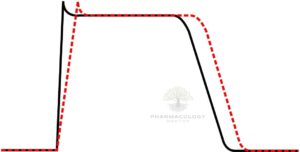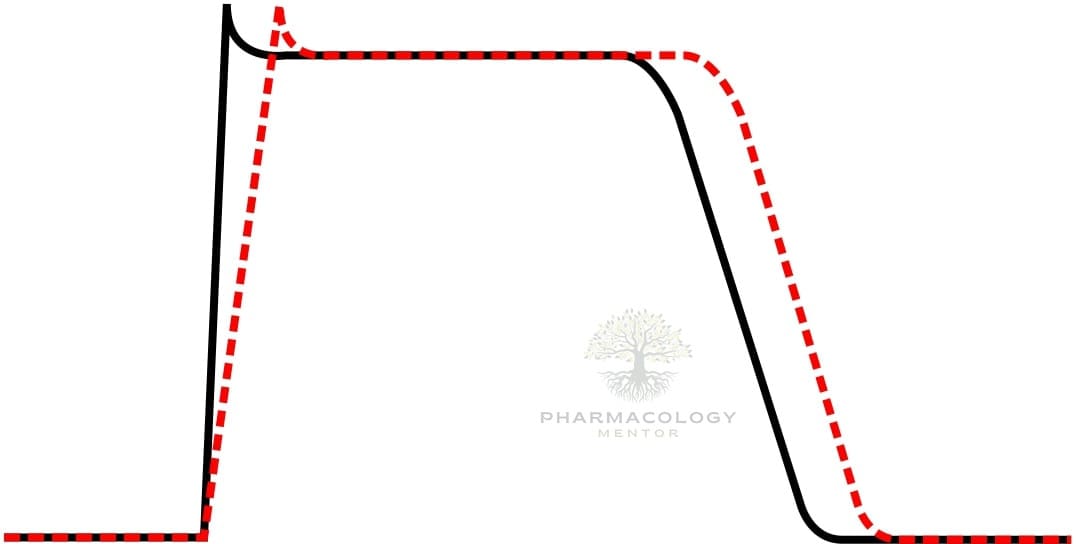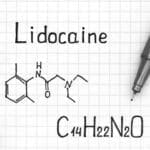Introduction
Disopyramide is a Class 1a antiarrhythmic agent, primarily used in the treatment of ventricular tachycardia. It functions as a sodium channel blocker, inhibiting conduction by depressing the increase in sodium permeability of cardiac myocytes during the initial phase of the cardiac action potential. This reduces the inward sodium current, leading to an increased threshold for excitation and decreased upstroke velocity of the action potential. Consequently, disopyramide prolongs the PR interval by lengthening both the QRS and P wave durations, which is particularly beneficial in treating ventricular tachycardia as it slows action potential propagation through the atria to the ventricles.
Cardiac Effects
Similarities with Procainamide and Quinidine

Unique Features
- Marked Antimuscarinic Effects: Disopyramide has even more pronounced antimuscarinic effects than quinidine. As a result, a drug that slows AV conduction should be administered alongside disopyramide when treating atrial flutter or fibrillation.
Toxicity
- Electrophysiologic Disturbances: Toxic levels of disopyramide can cause all the electrophysiologic disturbances associated with quinidine, such as QT-interval prolongation and torsades de pointes.
- Negative Inotropic Effect: Disopyramide may precipitate heart failure, especially in patients with preexisting depression of left ventricular function. Due to this, it is not a first-line antiarrhythmic agent in the USA.
- Atropine-Like Activity: This accounts for most of its symptomatic adverse effects, including urinary retention, dry mouth, blurred vision, constipation, and worsening of preexisting glaucoma.
Pharmacokinetics & Dosage
- Oral Use: In the USA, disopyramide is only available for oral use. The typical dosage is 150 mg three times a day, but up to 1 g/d has been used.
- Renal Impairment: Dosage must be reduced in patients with renal impairment.
- Loading Doses: Due to the risk of precipitating heart failure, loading doses are not recommended.
Therapeutic Use
- Limited Approval: In the USA, disopyramide is approved only for the treatment of ventricular arrhythmias, despite its effectiveness in treating a variety of supraventricular arrhythmias.
Conclusion
Disopyramide is a potent antiarrhythmic agent with a mechanism of action similar to procainamide and quinidine. However, its use is limited due to its range of adverse effects, particularly its potential to precipitate heart failure and its marked antimuscarinic effects. While it remains an option for treating certain arrhythmias, its use requires careful monitoring and is generally not considered a first-line treatment.
Note: This article is intended for educational purposes and should not be considered as medical advice. Always consult with a healthcare professional for medical advice and treatment.
📚 AI Pharma Quiz Generator
🎉 Quiz Results
Medical Disclaimer
The medical information on this post is for general educational purposes only and is provided by Pharmacology Mentor. While we strive to keep content current and accurate, Pharmacology Mentor makes no representations or warranties, express or implied, regarding the completeness, accuracy, reliability, suitability, or availability of the post, the website, or any information, products, services, or related graphics for any purpose. This content is not a substitute for professional medical advice, diagnosis, or treatment; always seek the advice of your physician or other qualified health provider with any questions you may have regarding a medical condition and never disregard or delay seeking professional advice because of something you have read here. Reliance on any information provided is solely at your own risk.









